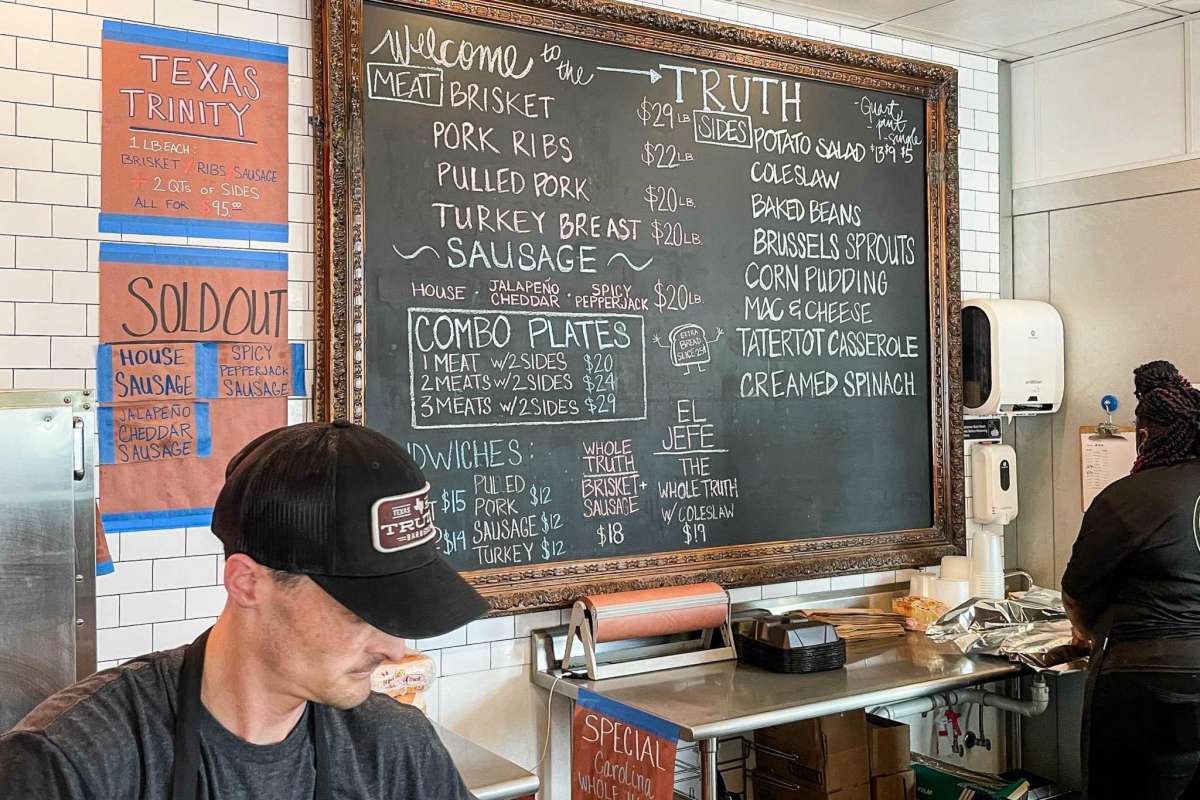 The staffing and supply chain issues that have wreaked havoc with the nation’s economy are particularly impactful on the barbecue business.
The staffing and supply chain issues that have wreaked havoc with the nation’s economy are particularly impactful on the barbecue business.
Let’s start with raw material costs. Rising prices for basic materials such as beef are nothing new. In normal times, the ebb and flow of brisket prices can be moderated using various techniques like product mix (promoting less expensive proteins like chicken) or volume discounts (temporarily charging more for smaller amounts of brisket).
These techniques are effective when the price of beef looks like a sine wave; that is, when the price rises in a slow curve and descends in an equally smooth way. The problem today is that the price of beef looks like the teeth on a saw blade — sharp, steep ups-and-downs on a daily or weekly basis.
In normal times, beef-price spreads might be, at most, $.50 week-to-week. Recently, I’ve seen the price of prime brisket at $5.50 per pound one week, and $7.50 the next.
This volatility creates unique problems for barbecue joints. First of all, how do you put a price on cooked brisket? Some are considering a “market price.” This is similar to fine-dining restaurants that have the letters “MKT” or “MP” as the price for certain items because the spot prices for these ingredients — think oysters or lobster — can change significantly day-to-day.
This also creates problems for physically changing the price of brisket on menus. It’s not unusual for old-school joints to have prices painted or stenciled on menu boards. If you see this, you know that this particular barbecue joint was probably founded during times when beef prices were low or stable.
In this case, a strategically placed piece of paper or cardboard is taped over the old price with the new price that may change daily.
Newly established barbecue joints have designed the volatile price of beef into their physical menu presentation. For instance, when you enter the front doors of Blood Bros. BBQ in Bellaire and look toward the ordering counter, you see what looks like standard letter boards for the menus. But as you inch closer to ordering, the menus are actually revealed to be video monitors that can be easily edited on a daily basis as necessary.
For new-school joints that want to keep an old-school vibe while retaining flexibility on raw product prices, chalk boards are the way to go. Though it takes some work to set up initially, just a quick swipe of an eraser can address brisket-price swings. The expansive, hand-lettered chalkboard menus at the Brenham and Houston locations of Truth BBQ are great examples of editable menus with an old school flair.
Though barbecue joints have weathered price volatility over the years, they have rarely experienced the staffing shortages that are the hallmark of 2021. Staffing is a more complex issue for barbecue joints, as opposed to, say, hamburger joints.
If a hamburger joint loses a cook, there is a big pool of other cooks with experience cooking hamburgers from which to recruit.
The skills needed to operate manual barbecue cookers, such as offset smokers, are specific and hard to find. On top of that, a hamburger joint may only be open eight hours a day, meaning they only need one shift to make the food. On the other hand, because it takes as long as 16 hours to cook a brisket, many barbecue joints cook 24 hours a day. In this case, they may need three shifts of pitmasters, and thus three-times the number of staff as other types of restaurants.
So the next time you are at your friendly neighborhood barbecue joint and the wait is a bit longer due to staffing concerns, and there is yet another piece of tape over the menu price for brisket, just remember that small businesses are doing their best to adapt to the new reality of short supplies and staffing.

